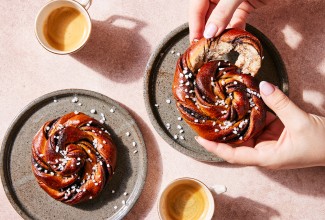Things bakers know: Pepper can punch up your sweets
This common pantry ingredient can be a “secret weapon” in desserts.
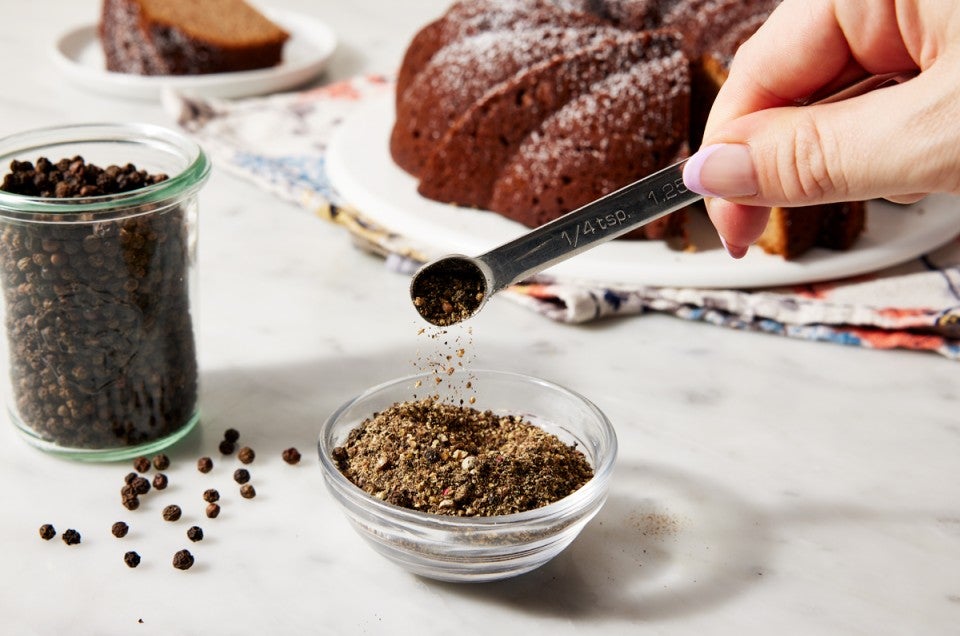

I have always loved black pepper and use it liberally in my home kitchen. But I gained a newfound appreciation for this commonplace ingredient many years ago on a visit to Kerala’s Malabar coast, in southeastern India, to see my then-husband’s maternal grandmother. It was there, in Kannur, an important port on the Arabian Sea, that I tasted fresh black peppercorns — harvested, fermented, and sun-dried — from the pepper vines in his grandmother’s lush garden. These peppercorns were woodsy and citrusy; they thrummed with subtle heat. I finally understood why pepper became a globally beloved spice — travelling via trade and conquest from southern India, where Piper nigrum is native, to Rome (cacio e pepe, anyone?), Egypt, Portugal, and beyond.
I brought a small stash of those Malabar peppercorns home to the U.S. and used them in curries and chai, of course, but also cookies and pies. Many bakers know that adding salt to a dessert can balance its sweetness and amplify its flavor, but don’t think to reach for the pepper grinder, too. “Black pepper is a great secret weapon,” says Alyse Baca, a trained pastry chef and culinary director at boutique spice company Spicewalla. “When used correctly, it enhances everything.”
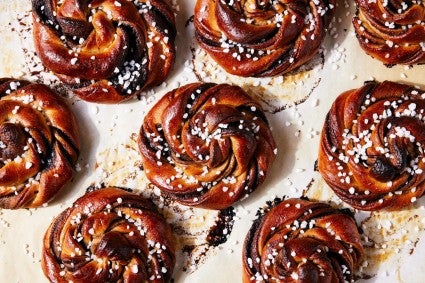
Black pepper contains multitudes: It’s spicy, but can also impart warm, piney, citrusy, or fruity notes depending on the varietal. “Black pepper is my preferred baking spice to enhance warmth in a dessert,” says Lisa Donovan, New York Times Cooking columnist and author of Our Lady of Perpetual Hunger. “When used in the right proportions and combined with the right bedfellows, it can either be a subtle play on warm spice or give a very interesting edge to something with baseline flavors.” Her Appalachian family used black pepper in dried apple hand pies because they could not afford — or find — cinnamon; combined with apples, sugar, and cream, it created the same warming effect as the hard-to-access spice.
Nik Sharma, a cookbook author (most recently, of Veg-Table) and chef, dispels the notion that black pepper is one-note. “When you use black pepper, a dessert isn’t just hot. It’s fragrant,” he says. This is perfectly exemplified in Cardamom Buns, in which black pepper intensifies the fruitiness and bitterness of black cocoa in the filling. Nik’s signature chocolate chip cookies, meanwhile, employ black pepper and crystallized ginger. “Chocolate has a strong flavor, and pepper can stand up to it. Ground black pepper and crystallized ginger both provide heat in different ways.” Similarly, in Spiced Rye Ginger Cookies, both black pepper and ground ginger give the biscuit bite.
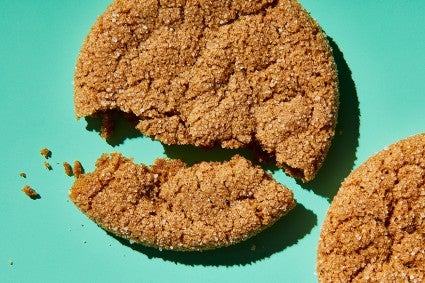
Like salt, a pinch of black pepper can counter and round out a dessert’s sweetness, especially one with fruit. A dash of black pepper assures that cobblers, jellies, and berry sauces are well-balanced and not too cloying, explains Alyse. One of her favorite desserts is grilled peaches or strawberries à la mode. “I crack black pepper into warm honey and drizzle it over fruit or ice cream; the sweetness of the honey and the earthiness of the pepper are such a good combination.” Create a party in your mouth by using black pepper in Spiced Peach Shortcakes; add 1/4 teaspoon ground black pepper to the filling to give it pop.
To get even more out of black pepper, Nik recommends cooking the spice in a fat, like butter or cream. This technique not only coaxes more flavor out of the spice, but also infuses flavor into the fat. “When I make a lemon pound cake, I melt the butter and add a few crushed black peppercorns and lemon zest to it; I strain it then fold the infused butter into the cake batter,” he says. When making lemon rosemary ice cream, he steeps peppercorns — along with lemon zest and bruised rosemary leaves — into the custard base and allows them to infuse overnight. Then he strains the custard and churns it; each spoonful of the resulting ice cream has a hint of peppery zing. You can give whipped cream the same treatment: Infuse 1/2 teaspoon black pepper per cup of cream, plus 2 teaspoons sugar, and follow the hot infusion method.
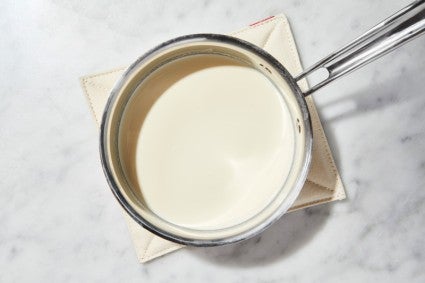
While pre-ground black pepper is ubiquitous, both Alyse and Nik recommend home bakers buy whole peppercorns and grind as needed. For the most robust flavor, “toast them in a pan to get [their] oils activated,” says Alyse. “Then pound in a mortar and pestle.”
Peppercorns should be stored in an opaque container and away from heat. Alyse understands why bakers keep spices above their stoves (so convenient!), but constant heat and light exposure can be damaging. “The best place to store spices is in a cupboard,” she says. “It’ll keep them fresh for longer.”
Lisa advises to “go easy at first, then see how you feel about [pepper’s] presence.” She recommends adding it to spice-forward bakes, like steamed toffee puddings or gingerbread. “It will leave your guests feeling like they’ve had something slightly more interesting than usual.”
Nik also encourages home bakers to experiment with various black pepper varietals. “Try a fragrant black pepper like Tellicherry,” he says, which is grown in Thalassery, also on the Malabar coast, and considered some of the finest peppercorns in the world: sweet, earthy, and plump. “If you have access to citrusy, floral Kampot black peppercorns, use them,” encourages Nik. “There are so many options.”
Ready to spice up your baking? Use black pepper in recipes for Cape Cod Soft Molasses Cookies, Cardamom Buns, Steamed Harvest Bread, Pumpkin Pie, Chai-Spiced Pound Cake, and Spicy Rye Ginger Cookies.
Cover photo by Rick Holbrook; food styling by Kaitlin Wayne.
